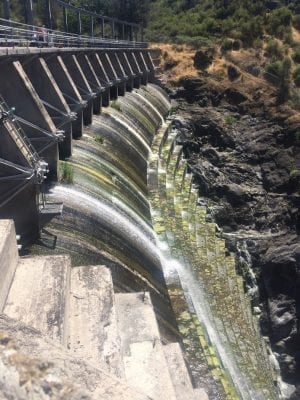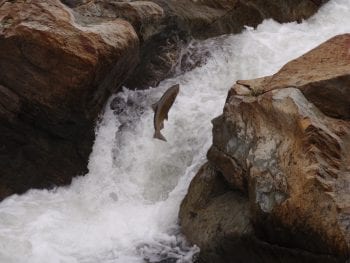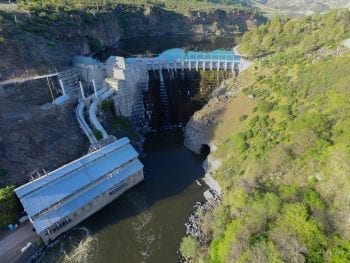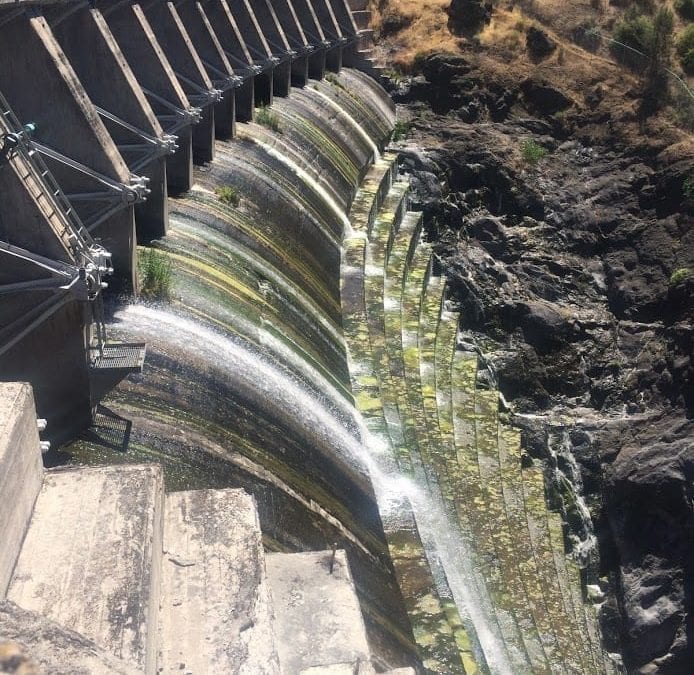Klamath River – Key milestone reached for largest dam removal project in US history

Copco No. 1 Dam. Photo courtesy of Anna Murveit (KRRC)
The Klamath River, which flows through parts of Southern Oregon and Northern California, has four aging hydroelectric dams which have blocked salmon and steelhead fish from reaching more than 300 miles of potential spawning and rearing habitat. Removal of the river’s four dams – J.C. Boyle, Copco 1, Copco 2, and Iron Gate have been the subject of national attention for nearly two decades
Last week however, progress was been made towards the most significant dam removal effort in US history when the Klamath River Renewal Corporation (KRRC) filed its “Definite Plan for the Lower Klamath Project” with the Federal Regulatory energy Commission (FERC).
The Definite Plan is a 2,300-page document that provides comprehensive analysis and detail on project design, deconstruction, reservoir restoration, and other post-deconstruction activities. Additional topics covered include plans to: manage construction impacts, manage impacts to groundwater wells, perform flood-proofing, improve roads and bridges, provide recreation opportunities, replace the City of Yreka water line, protect aquatic resources, and provide for ongoing fish hatchery operations.

Leaping Salmon. Photo courtesy of Mid-Klamath Watershed Council
Dam removal is projected to improve water quality and revive flagging salmon and steelhead fisheries on this major river system. Removal additionally provides economic benefit to the region by creating local jobs and boosting tourism and recreation in the area. A study released by the US Geological Survey in 2017 demonstrated fish are eager to return to the upper reaches of watersheds after dam removal, even if the areas have been blocked for decades or more. The study showed that historic upstream habitat can be recolonized by fish in a matter of weeks after access is restored.
Restoration activities outlined in the Definite Plan will include improving habitat along the river. CalTrout has been active in the region and has, among other projects, partnered with ranchers along the Scott and Shasta Rivers – two Klamath River tributaries – to improve conditions for migratory fish that are likely to return to the system once the dams are removed.
“After more than a decade of working toward removal of these four problematic dams, it’s exciting to see KRRC taking concrete steps toward making this vision a reality,” said Curtis Knight, executive director of CalTrout and one of the original negotiators involved in the development of terms of the Klamath settlement agreements, including the agreement that shaped how and when the dams would be removed.
The Klamath River was once the source of significant salmon and steelhead runs. Opening up the lower reaches of the river through this process will be invaluable in the effort to recover these fish runs. – Curtis Knight

Copco No 1 Dam. Photo by Mike Wier
“CalTrout’s goal is to find constructive solutions that support the needs of fish and people,” added Drew Braugh, Mt. Shasta/Klamath program director for California Trout. “This recent milestone in the dam removal process is an important step in the right direction. And our ongoing work with ranchers and farmers will help to ensure that conditions will be as good as possible for these fish when they finally have a chance to access large swaths of the Klamath watershed for the first time in over a century.”
CalTrout has been and continues to be deeply involved in the effort to identify a way forward in the Klamath Basin that respects the needs, rights and values of residents, Tribes, ranchers and farmers, and conservationists who are all invested in the future of this region.
More information about KRRC and its mission can be found at KRRC’s website: www.klamathrenewal.org.





